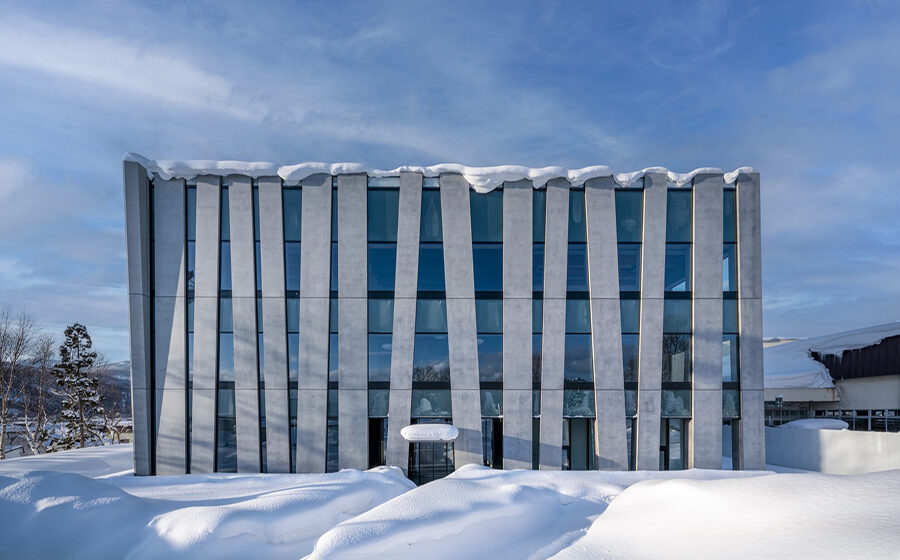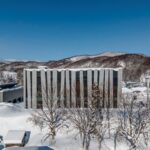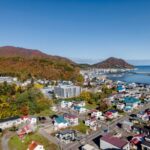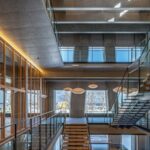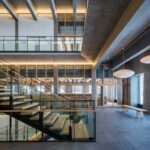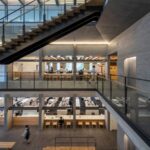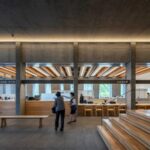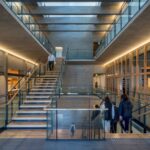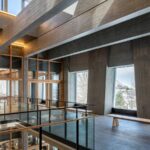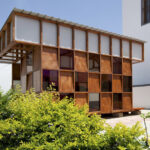Architectural Elegance by TAISEI DESIGN Planners Architects & Engineers
Preserving Tradition, Embracing Modernity – 2022
Nestled in the town of Furubira in Hokkaido, Japan, the Furubira Town Hall CAN@YELL stands as a symbol of architectural innovation and environmental consciousness. Crafted by TAISEI DESIGN Planners Architects & Engineers under the guidance of lead architect Akio Takahashi, this community center embraces sustainability, symbolizing Furubira’s commitment to becoming a “Zero Carbon City.”

Reinventing Tradition: A Municipal Marvel
In 2022, Furubira witnessed the emergence of a new municipal building and exchange facility complex, replacing the old structure that had served for nearly a century. Vulnerable to seismic activities, the rebuilding initiative aimed not only to address structural concerns but also to align with Furubira’s declaration as a “Zero Carbon City” – an ambitious endeavor to achieve minimal net carbon dioxide emissions by 2050.
Climate-Informed Design: Adapting to Hokkaido’s Realities
Situated in a region enduring harsh winters with almost half the year covered in snow, the architectural vision aimed at significant energy savings and environmental sustainability. The exterior, resembling a grove, boasts a structure supporting horizontal forces with externally insulated wall columns on all sides. This design facilitates adjustments to the size of openings and column spacing, catering to the interior’s functional needs.

Energy Efficiency: A Marriage of Form and Function
The perimeter’s concrete structure incorporates radiant heating and cooling features, transforming it into a heat storage device. This not only ensures a warm environment by the window during winter but also aligns with Furubira’s climate advantage. Photovoltaic panels adorn the glass openings, offering both energy generation and scenic views. Ventilation openings seamlessly integrate with the grove-like exterior walls, fostering an energy-efficient and comfortable living space.
Timber Warmth: Hokkaido’s Contribution
With a thoughtfully planned floor area of 36 square meters, the building minimizes exterior wall exposure. Local Hokkaido timber takes center stage, contributing to the regional timber cycle while providing a warm and welcoming atmosphere for local residents.
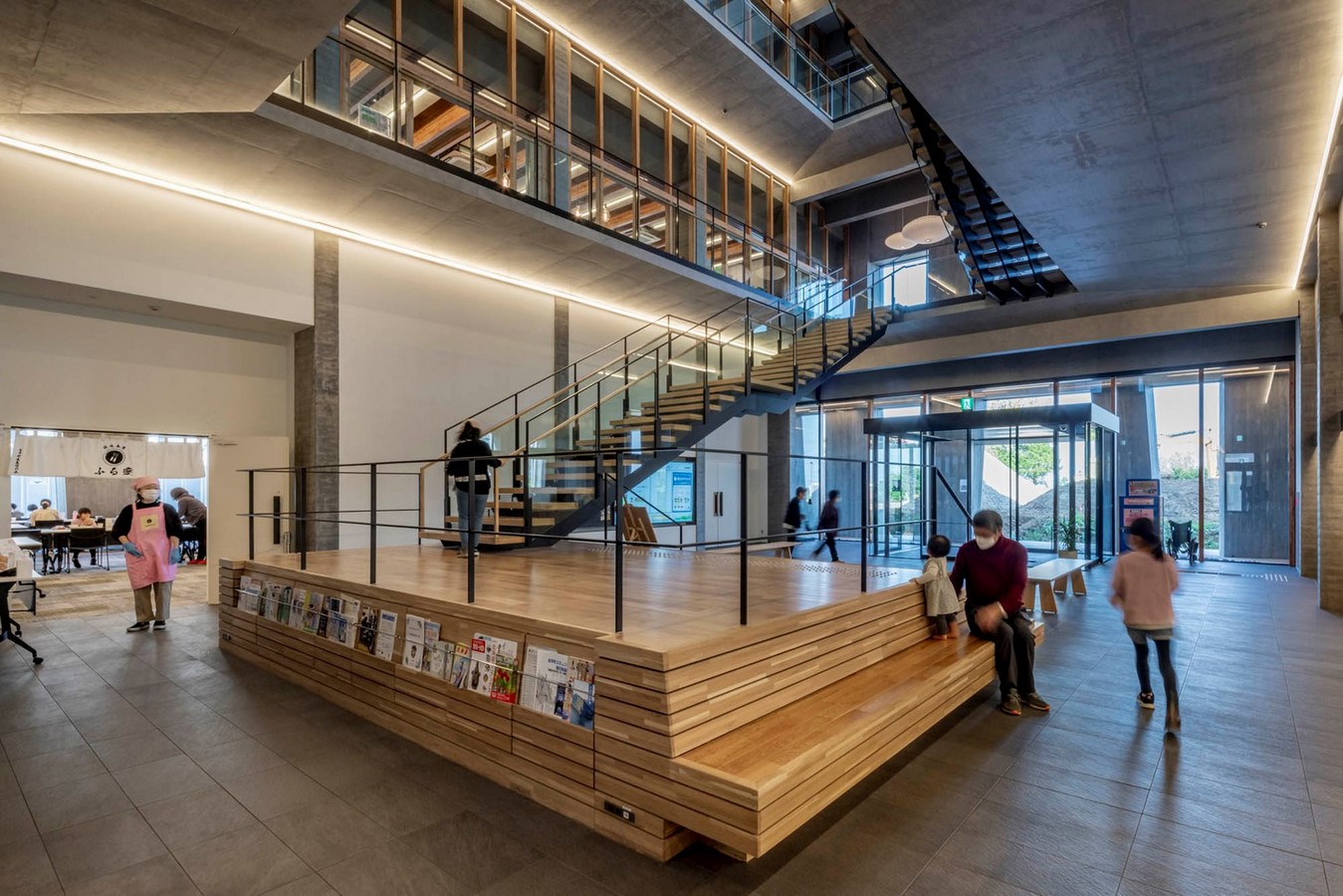
Innovative Composite Beams: Strength in Integration
Introducing composite beams, a blend of laminated wood and concrete, was a pioneering move. The Hokkaido larch wood used for beams enhances strength by 1.5 times. Integrated at the factory, this wood serves as both formwork for concrete casting and the final installed beam, minimizing formwork waste and storing CO2. The precast method, especially beneficial during winter installation, significantly improved workability in snowy conditions.
Sustainable Memory-Making: Design for Posterity
Beyond structural innovation, the Furubira Town Hall captures the essence of the present through workshops and upcycling initiatives. Tie holes in the grove-like structure become a canvas for local children’s drawings, while discarded formwork finds new life in the Japanese-style room’s sloping ceiling.
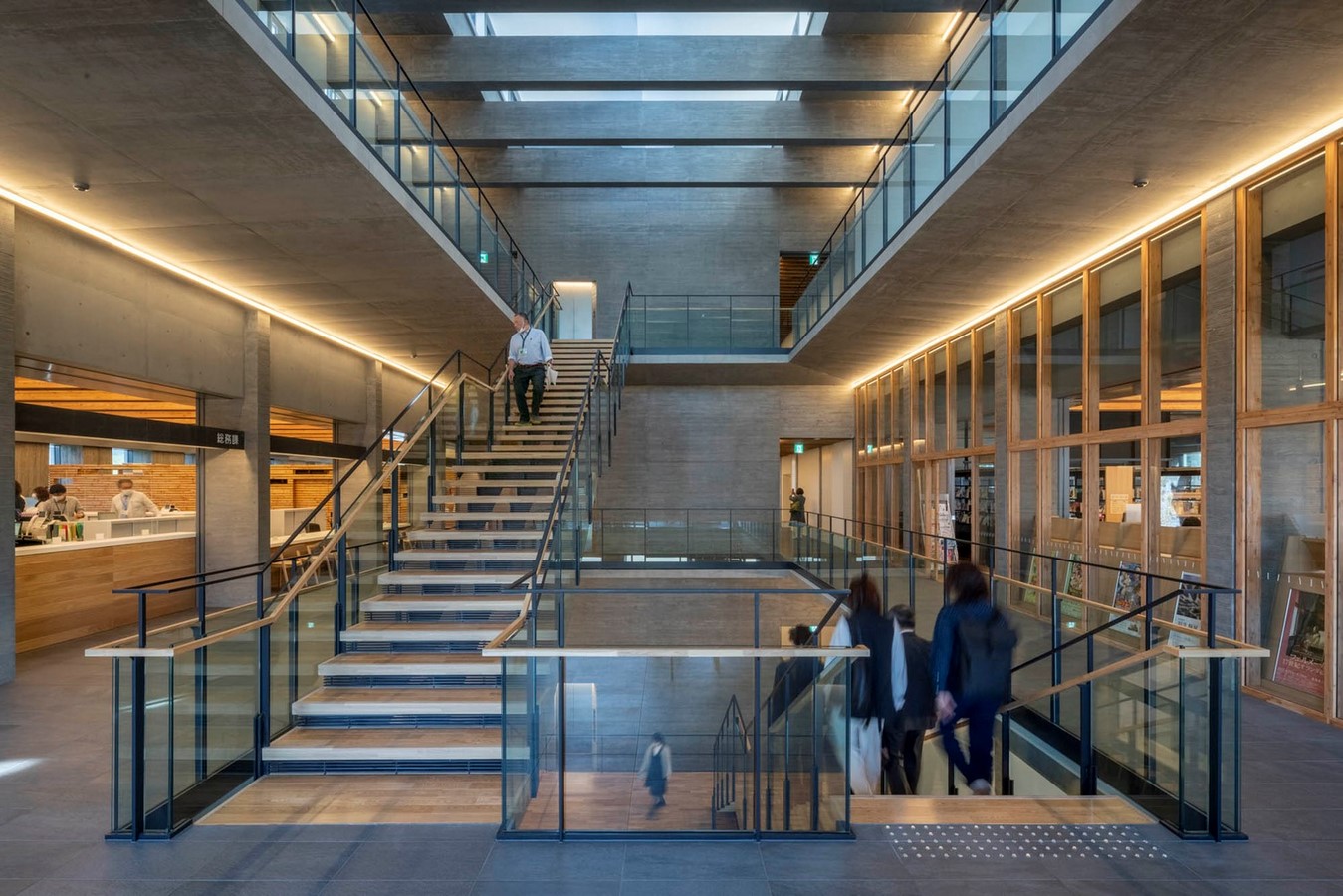
Environmental Legacy: ZEB Certification and Beyond
Tailored to the local environment, this project proudly boasts being the first Zero Energy Building (ZEB)-certified municipal building in a cold region. At its current stage, it achieves a remarkable 79% in energy savings. With aspirations to stand for a century, the Furubira Town Hall CAN@YELL not only aims to reduce CO2 emissions but also positions Furubira as a beacon of environmental responsibility and sustainable living.

